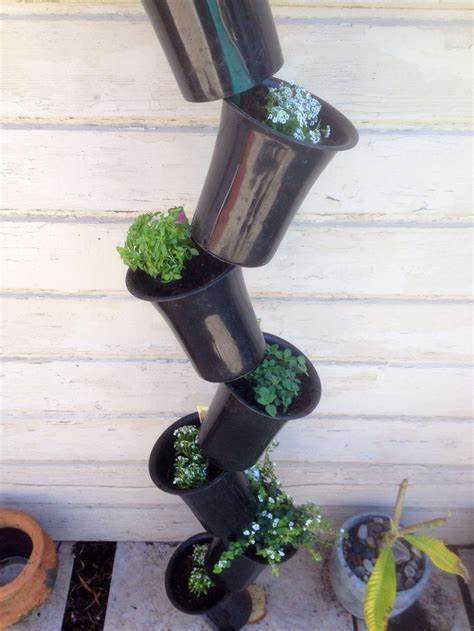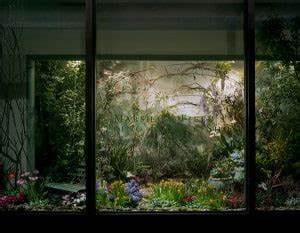
Affordable Vertical Garden Ideas: Enhancing Green Spaces with Budget-Friendly Solutions
Introduction
The popularity of vertical gardening has soared in recent years due to its ability to maximize space utilization and add aesthetic appeal. This article delves into affordable vertical garden ideas and their significance for individuals and communities. By repurposing materials, cultivating edible plants, and utilizing DIY structures, you can create a thriving vertical garden without incurring excessive costs.
Historical Background
Vertical gardening has roots dating back centuries, with notable examples like the Hanging Gardens of Babylon from ancient civilizations. However, its practicality and innovative solutions for urban greening and limited spaces have gained attention only in recent years.
Key Concepts and Definitions
Vertical gardening involves utilizing vertical spaces such as walls or fences to grow plants vertically, optimizing space and offering various benefits like improved air quality, reduced energy consumption, and increased access to fresh produce. Budget-friendly gardening refers to cost-effective approaches that enable the creation of beautiful gardens without significant expenses.

Main Discussion Points:
Point: Creative Repurposing of Materials
Repurposing materials is one of the most cost-effective ways to establish a vertical garden. By using recycled containers like old buckets, tin cans, or plastic bottles as planters, you can save money while reducing waste. Moreover, transforming discarded furniture such as wooden pallets or ladders into vertical garden structures adds creativity and minimizes the need for purchasing new materials.
Point: Growing Edible Plants for Cost Savings
Growing your own food not only brings a sense of accomplishment but also provides cost-effective benefits. Vertical gardens offer an ideal space for cultivating high-yield crops like tomatoes, cucumbers, or beans, maximizing productivity even in limited areas. Selecting crops suitable for your climate and soil conditions ensures a bountiful harvest without a hefty price tag. Additionally, cultivating herbs and vegetables in vertical garden systems such as hanging pots or wall-mounted planters adds accessibility and freshness to your meals.
Point: DIY Vertical Garden Structures
Constructing your own vertical garden structures presents an excellent opportunity to save money while adding personal flair. For instance, using discarded wooden pallets as the framework for planting pockets creates a versatile and visually appealing pallet garden. Furthermore, building trellises or wall-mounted planters from simple materials like PVC pipes or wooden planks offers an affordable solution for supporting climbing plants and adding vertical interest to your garden.

Case Studies or Examples
Example: Community Garden Project
A community garden project implemented budget-friendly vertical gardening techniques, transforming underutilized spaces into vibrant green areas. By repurposing old containers and receiving donated materials from local businesses, the project successfully created a thriving vertical garden that fostered community engagement while providing fresh produce for residents.
Example: Individual Success Story
An individual with limited resources achieved a flourishing vertical garden through budget-friendly techniques. By repurposing discarded items and focusing on high-yield crops, the individual not only created a beautiful green space but also saved money on grocery bills, showcasing the practicality and affordability of vertical gardening.
Current Trends or Developments
Vertical gardening has witnessed a surge in popularity, especially in urban areas where space is scarce. Rooftop gardens, living walls, and vertical farms are becoming commonplace as more individuals and communities recognize the benefits of vertical gardening. Recent research also highlights the cost-effectiveness of this practice, demonstrating reduced food costs and increased access to fresh produce.

Challenges or Controversies
Concerns surrounding the structural stability and safety of vertical gardens have been raised. It is crucial to ensure proper support and anchoring systems are in place to prevent accidents or property damage. Moreover, differing viewpoints exist regarding the environmental impact of vertical gardening, particularly regarding water usage and energy consumption. Ongoing research aims to address these concerns and develop sustainable solutions.
Future Outlook
The future of budget-friendly vertical gardening appears promising, with advancements in technology and design offering even more affordable and accessible options. As urbanization continues, vertical gardening has the potential to address food security and urban greening challenges, bringing green spaces to predominantly concrete environments. Continued research and innovation will inevitably introduce new techniques and practices that make vertical gardening an essential part of sustainable living.
Conclusion
Budget-friendly vertical garden ideas provide practical and cost-effective solutions for individuals and communities seeking to create green spaces in limited areas. By creatively repurposing materials, growing edible plants, and utilizing DIY structures, anyone can enjoy the benefits of vertical gardening without straining their budget. The growing popularity of vertical gardening, coupled with recent research findings, emphasizes its potential to address urban greening challenges and promote food security. Embracing these ideas enhances our living spaces and contributes to a more sustainable and vibrant future.
References
Smith, A. (2020). The Vertical Garden: From Nature to the City. New York: Princeton Architectural Press.
Sustainable Gardening Australia. (2021). Vertical Gardening: Maximise Your Growing Space.
Urban Agriculture Notes. (n.d.). Vertical Farming Publications.




